LexisNexis Canada Student Essay Contest: Advocating for Animals
ALTAMUSH SAEED: ANIMAL PROTECTION IN NATURAL DISASTERS
What was our share in the sinning,
That we must share the doom?
What had we done, our Masters,
That you sold us onto Hell
-- The Horses by Katherine Lee Bates [1]
With over 69% of biodiversity loss reported from 1968-2018, followed by over 25 water-related disasters in the U.S. alone post-2018, the combined animal deaths due to Hurricane Michael and Florence (both occurring in 2018) were 5.5 million, out of which 3.4 million were chickens and 5,500 pigs, many of which drowned and caused the CAFO manure pits to overflow and pollute waterways. [2]
However, the livestock animal death toll is a global phenomenon instead of just one in the U.S. or Canada. For example, the ongoing Kenyan drought since 2016 has led to the deaths of several animals. [3] Kenya wildlife officials counted the deaths of various species between February and October 2022 and found that the drought has killed 512 wildebeest, 381 zebras, 205 elephants, 49 Grevy's zebras, 51 buffalo, 12 giraffes, eight reticulated animals, and four Massai animals. Similarly, in Pakistan, the 2022 floods, which at one point had drowned one third of the country, led to the deaths of over a million livestock animals. Pakistan, like Kenya, also faces yearly droughts, and countless livestock animals die annually. [4]
In 2021, Following British Columbia's flooding and mudslides caused by excessive rain, about 700,000 animals perished. As of right now, according to the B.C. Ministry of Agriculture, 420 dairy cows, 12,000 piglets, and 628,000 birds have perished. A further 110 beehives were destroyed, which resulted in the death of three million bees. [5]
On the legal end, we need an international farmed animal protection instrument that may act as an adaptation measure to advocate for global animal protection during disasters. What will that measure looks like can be informed by recent legal developments in the U.S. Farmed Animal Natural disaster policy framework. These laws include the Pets Act, thePaw Act, the in-session Prepared Act, and the Industrial Agriculture Accountability Act. Canada lacks an effective framework like the one in the U.S. [6]
While we venture towards an international instrument, many countries that yet lack a national farmed animal disaster protection policy can learn from the U.S. framework, including Canada and perhaps, soon, Canada may become one of the animal protection leaders in natural disasters.
KIRSTEN DIKA: THE ANIMAL AGRICULTURE INDUSTRY
There are currently no legally binding standards for the way animals on farms are treated in Canada. In cases of disease outbreak, such as covid-19 or avian flu, thousands of animals are “depopulated” on farms, and industry-accepted methods set out by the National Farm Animal Care Council (NFACC) include gassing, electrocution, and blunt force trauma. This includes healthy animals when backlog occurs due to human workers being infected, such as in the case of covid-19. Because these methods are guidelines only, there is concern that Canadian farms will turn to even more egregious methods used in the United States, such as VSD, otherwise known as “ventilation shutdown”, in which animals are literally cooked to death when ventilation is sealed off in barns; animals die a slow and agonizing death from heat and steam exposure.
Leaving the animal agriculture industry to regulate itself is dangerous and unethical. Current industry standard practices are cruel, archaic, and contrary to what the majority of Canadians would find acceptable treatment of any animal. Canada needs strong protection laws for farmed animals, and public and property law are good places to start. To adequately protect animals in Canada, including farmed animals, a clear, comprehensive Animal Charter of Rights needs to be established (and enforced), in which animals’ intrinsic worth and sentience are recognized. Countries around the world are recognizing animals as sentient beings with inherent rights, including in Scotland with its independent Animal Welfare Commission, which considers legislative routes to protect the welfare of sentient animals. It is time for new law and reform.
Another major piece of the puzzle is dismantling the doctrine of animals as property in Canada. “What’s this thing”, my property professor said, pointing to an image of a huge whale in our first-year property law class. “What are the property rights at play here?” Later, the same professor (and most of the class) laughed as she showed images of cows stuck in fences, referring to them as unfeeling, inanimate objects, the discussion completely lacking recognition of the individual animals’ pain, dehydration, or distress. Animals as property is deeply entrenched in modern thinking and is incompatible with recognizing and respecting animals’ innate rights. Under the law, a beloved four-legged family member is treated no differently than a lamp or TV stand, and it’s even worse for farmed animals, who are often considered en masse and as commodities, their intrinsic worth and individuality ignored. An Animal Charter of Rights would support the transition away from legally classifying animals as property.
The need for animal protection law creation and reform in Canada couldn’t be greater. The law must change to recognize the personhood of animals and do away with the outdated notions of the past. It must also work to ensure animal laws are taken seriously and enforced when broken. Animal rights advocacy is my greatest focus while I learn the law over the next three years and will continue to be so when I am a practicing lawyer.
JESSICA TSELEPY: THE INHERENT FLAWS OF SELF-REGULATION IN GOVERNING NON-HUMAN ANIMAL BASED RESEARCH IN CANADA
Author’s Note: My approach to this short article is informed both from being a member of an institutional animal care and use committee (or animal ethic committee in Australia), as well as from the insights of Professor Paul Locke into the IACUC models in North America for the Lewis & Clark LL.M. (Animal Law) program. The thoughts so expressed represent my own individual opinion and are affiliated with no institution.
Decentralization of power can provide many virtues for governance structures. Simultaneously, regulation that is excessively reliant on custom and practice is exposed to serious vulnerabilities. One such example of the vulnerabilities suffered by a largely decentralised system is the oversight of non-human animals used in research in Canada. In Canada, institutional animal care and use committees (IACUCs) self-regulate. [7] I posit that the use of self-regulatory models in the scientific use of non-human animals has resulted in a reinforced difficulty in holding infringers of welfare standards to account and in transitioning away from this inherently harmful practice.
The roots of this issue are grounded in Canada’s legislative context. Canada has no federal legislation governing animal-based research. [8] Further, under the division of powers in the Canadian Constitution, particularly sections 92(13) and (16), all matters concerning civil rights and property fall under provincial jurisdiction. Research is characterised as falling within the realm of property, and the provinces have, therefore, historically had jurisdiction over research matters.
While legislation is no panacea to the plethora of issues facing non-human animals in today’s world, the tool is unique in its capacity to deliver sanctions for cruel behaviours. For instance, legislation such as the Canadian Criminal Code [9] can be effective in bringing sanctions against prohibited acts. Instead of such enforcement measures being made available, the use of non-human animals has fallen not to provincial legislation, but instead largely to the Canadian Council on Animal Care’s (CCAC) Guide to the Care and Use of Experimental Animals. [10] Compliance with the guidelines is largely unenforceable. [11]
A tangible improvement to the Canadian law concerning the use of non-human animals in research would be the oversight of research facilities by a dedicated third-party organization, which has non-human animal welfare as its top priority. Such an organisation should be empowered by new provincial legislation to enforce any non-compliance with recognised non-human animal welfare standards (which may include CCAC standards, or more independent standards as developed by the third-party entity itself).
The immediate benefits of this proposal would lie in separating the oversight function from the research institutions that have an active interest in continuing the use of non-human animals. The long-term benefits, most importantly, are for the non-human animals themselves: a more objective assessment of institutional compliance with welfare standards and improved legislative enforcement tools can lead to not only the better treatment of the non-human animals currently held, but may ultimately incentivise the transition away from the destructive use of sentient, feeling beings in the name of science.
[7] G. Griffin & P. Locke, “Comparison of the Canadian and US laws, regulations, policies, and systems of oversight for animals in research” (2016) ILAR journal, 57(3), 271-284 at 271.
[8] G. Griffin & P. Locke, “Comparison of the Canadian and US laws, regulations, policies, and systems of oversight for animals in research” (2016) ILAR journal, 57(3), 271-284 at 272.
[9] For instance, s 444–447 broadly protect non-human animals against cruelty in Canada.
[10] E.D. Olfert, B.M. Cross & A.A. McWilliam, CCAC guide to the care and use of experimental animals (1993).





